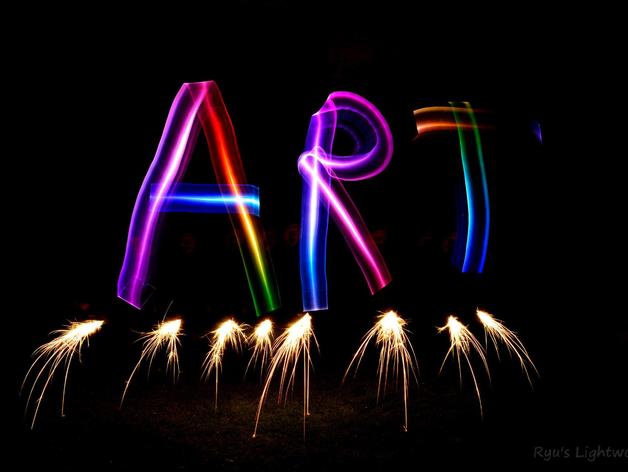
LightPainting Flashlight Acrylic Glas Blade Adapter
thingiverse
Adapters to attach acrylic glass "blades" to torchlights for light painting photography were designed and built. A few compact adapters were created to attach blades directly to flashlights in different sizes, as well as a plug-in system to quickly switch between blades. A camera was set up with an RGB flashlight to draw letters and sparks using survival fire starters. The first image shows a successful example of this technique, while the second image demonstrates how mistakes can be made when spelling letters due to the need to paint them in reverse for correct viewing. The next two images show examples of what can be created with these tools, including effects described in the project section on color mixing using light. The last two photos display the attached tool, first the direct attachment and second the plug-in system. This project was designed to attach acrylic blades to flashlights without limiting the LED options or colors used. Two sizes were created for common flashlight diameters and acrylic glass thicknesses to be used directly with a flashlight and colored gels inside them. A plug-in system was also designed, allowing swift clipping between blades and colored gels. Additional flashlight diameters can be accommodated upon request. The custom section of this project focuses on understanding additive color mixing and different "layers" in light painting photography. The objective is to become accustomed to how light in different colors composes to form a final image captured by a camera, making it an engaging way to learn about color models and additive color mixing. This project showcases the versatility of 3D printing in transforming mundane objects into art tools. It also demonstrates concepts of 3D printing, such as layering, which can be applied when using this tool to create artworks with light painting photography. The recommended audience for this project includes students interested in art and photography, as it helps develop skills in color theory and layering while creating unique visual effects. A camera that can take long exposure photos is necessary, preferably a DSLR set to bulb mode, but any camera with exposure control can be used. To complete the project, adapters are printed for the torchlight and selected acrylic glass sheets. A dark place is required, and the camera is set up with ISO 100, aperture f/9 to f/14, and bulb mode. The user becomes accustomed to their surroundings while still having light or using their flashlight. An exposure is started, and the acrylic blade illuminated by the flashlight is used to "paint" forms into thin air. Initially, white light is used to get a feel for how it looks on the taken photo, then colors are added to combine different wavelengths of light to mix colors. The resulting photos show awesome visual effects and demonstrate the understanding gained about additive color mixing and layering. This project encourages experimentation with colors and their combinations, making it an engaging learning experience. Several flashlights are supported by this project, including direct adapters for 24mm, 27mm, 34mm, and 37mm head diameters. The plug system is available in 27mm and 37mm versions, accommodating most common flashlight dimensions.
With this file you will be able to print LightPainting Flashlight Acrylic Glas Blade Adapter with your 3D printer. Click on the button and save the file on your computer to work, edit or customize your design. You can also find more 3D designs for printers on LightPainting Flashlight Acrylic Glas Blade Adapter.
